Can these 35-ton units solve a huge problem with renewable energy sources?
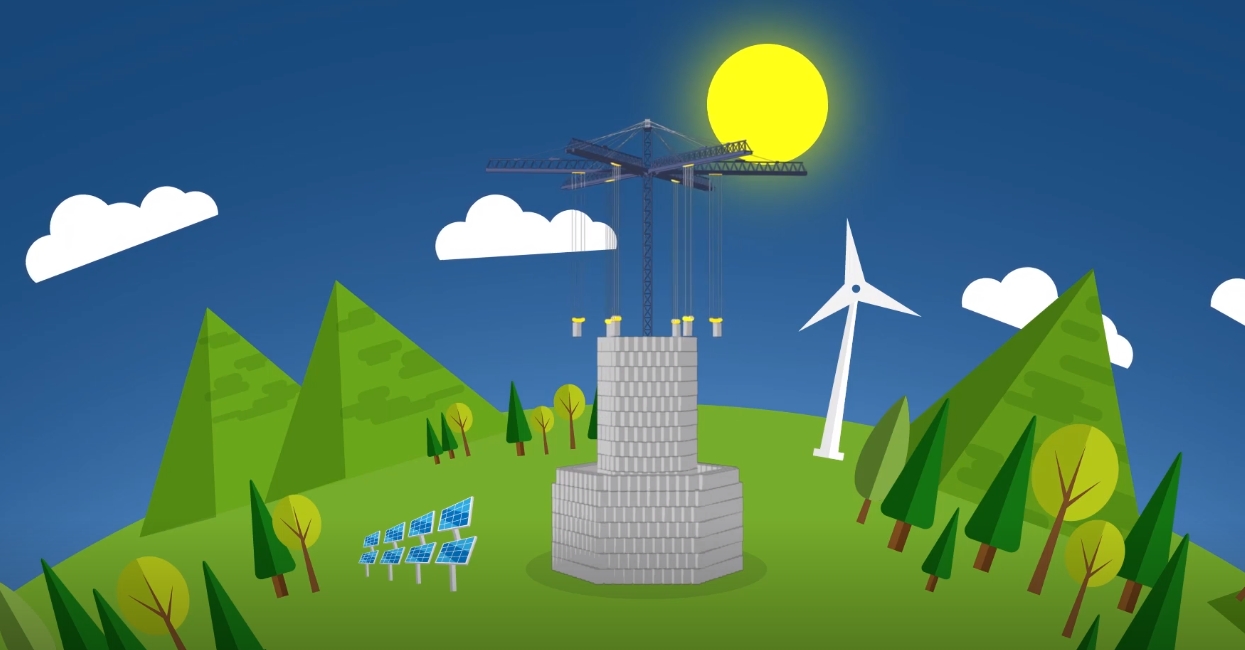
Energy Vault and Idealab announced the commercial availability of their “innovative” solution and are planning, in reality, to organize the implementation of their energy start-up together with the Indian energy giant Tata and the Mexican construction company CEMEX at full capacity.
- What kind of development do they implement?
')
- "Smart" gravity towers. These are such complexes of mega-cranes (height of 120 meters or 393 feet, six arrows on the tower) + 35-ton concrete blocks (many) + software for controlling the movement of blocks and components of the power generation system.
- That is, we are building a tall skyscraper from blocks, and in the center there are several cranes, and then special software plays “energy tetris”, moving the blocks up and down, generating or wasting energy? They definitely saw it in the cuckoo clock.
- Only here we still save energy for a long time, and wind turbines or solar stations nearby will assist in the stages of lifting the blocks to minimize energy costs. Efficiency promise up to 80-90%, and the total power (full storage capacity in this case) as in medium hydropower plants, six motors in cranes, from 2 to 5 MW, the output power is stated, but this is in theory. It all depends on the algorithms of special software and modern energy-generation complexes.
The first gravitational power plants are planning to build and launch into operation by the beginning of 2019.
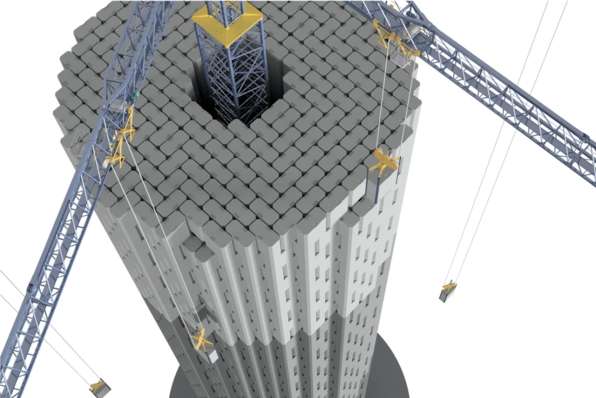
In many countries, it is now cheaper to build a new solar or wind energy farm than to use an old coal-fired power plant. But when the sun is hidden by clouds, and the wind is in calm mode, such renewable electricity can still be quite expensive to store, although the cost of batteries drops every year. It turns out that if now the whole world switched to 100% renewable electricity, then everyone would have to pay large bills for electricity.
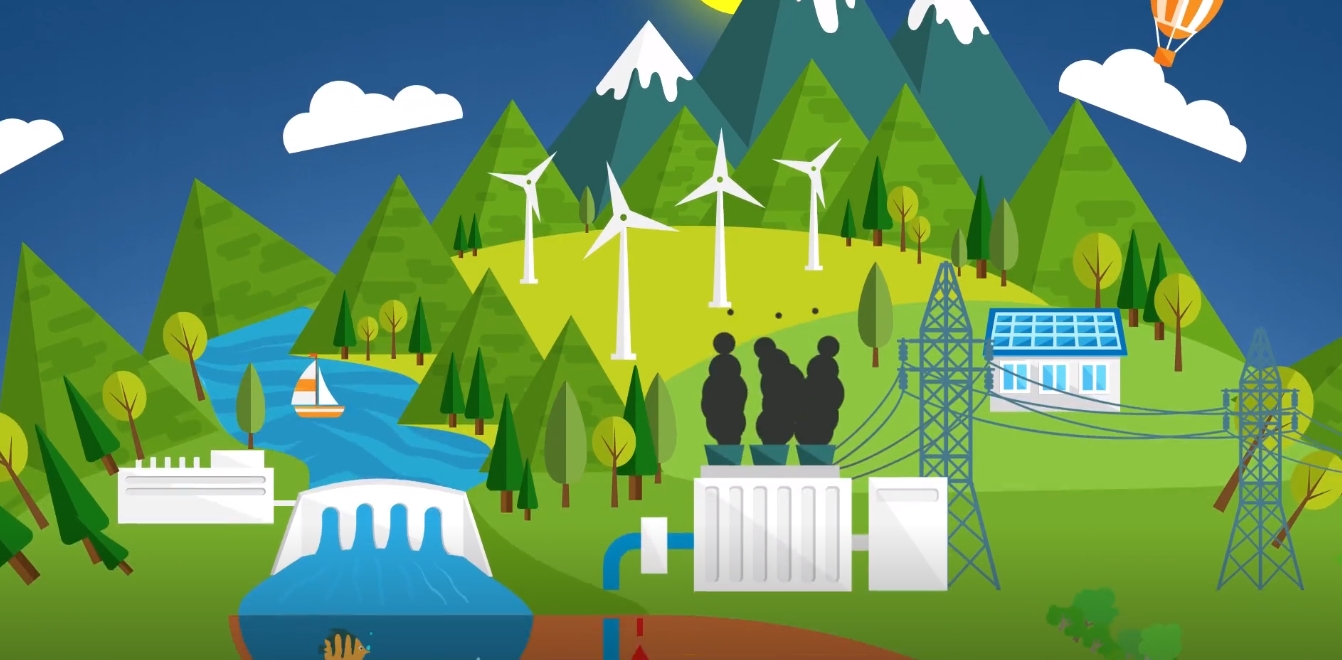
The new solution using basic physics will help reduce the cost of energy storage by half, saving up to 80% in total costs compared to the total cycle time for using renewable systems. Such synergy allows renewable energy sources to be cheaper than when disposing of simple fossil fuels using such systems full-time, every day of the year, in virtually any area.
“For the first time, our development will allow the world to reach a new stage in the energy sector,” says Robert Piconi, CEO and co-founder of Energy Vault, a startup who developed a new system.
Tata Power, a giant Indian electrical company, will be their first customer.
Energy Vault, based in California and Switzerland, was inspired in its design by the concept of dam ligament and hydroelectric power plants — when energy demand is low, water is used as a source of energy storage, pumping dam volume, and then generating energy from using hydroelectric turbines. Such an energy system works only in places where dams can be physically built, but dams themselves also damage existing ecosystems and nature, affect population migration and can cause great disasters in the event of an accident.
Like the dam, the new solution is a large massive tower, about the height of a 35-story building. But the construction does not require the presence of large volumes of water, as an energy conductor.
If wind turbines or a solar farm produce more energy than consumers need at the moment, an automatic crane can use this energy to lift a giant block weighing 35 metric tons, and such a block can be lifted up to the top of the tower.
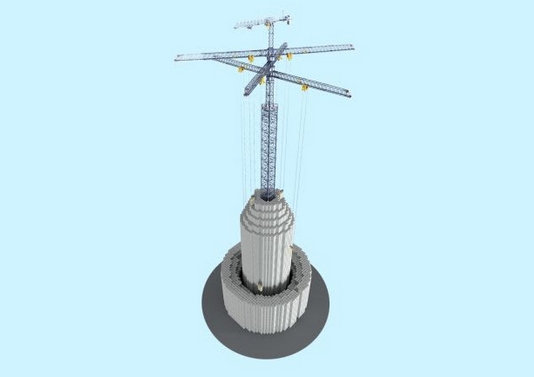
“When our tower is completely collapsed, this is all a colossal potential energy,” says Piconi.
When consumers begin to need additional power, the crane automatically begins to lower the blocks, using kinetic energy to charge the generator and then return the generated energy to the grid.
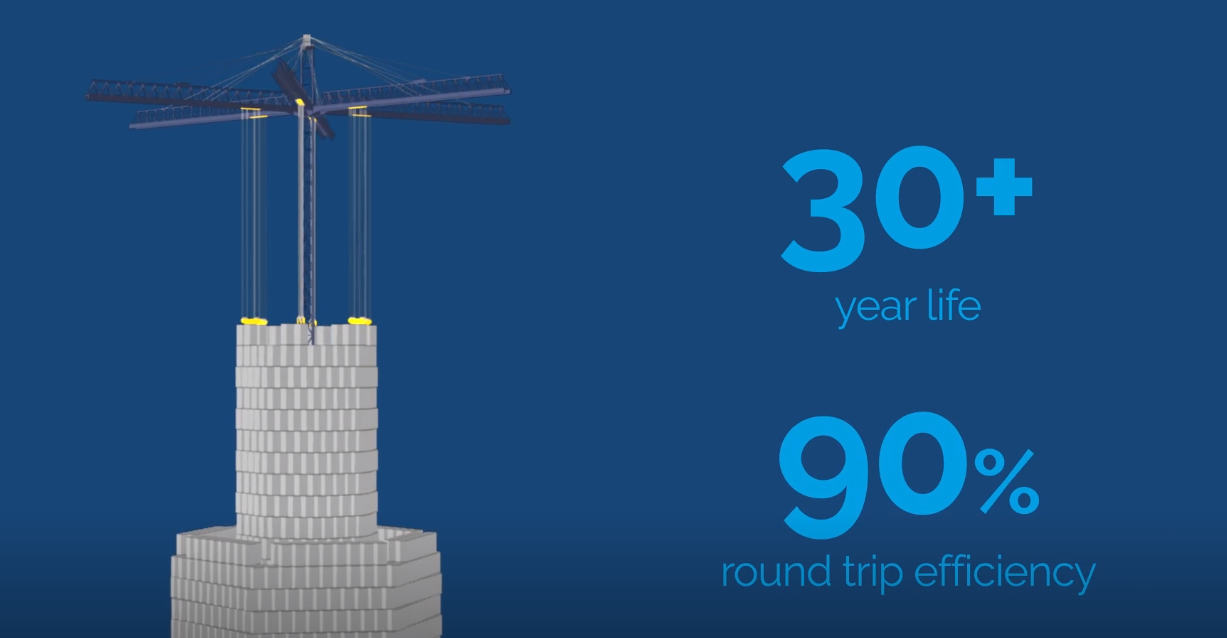
All actions to work with giant blocks occur fairly quickly.
“We may have a millisecond response time,” says Piconi.

The control system with the help of special software receives data from the grid, processes it with minimal delay, in order to give the most correct commands for automatic control of cranes, which precisely and according to a predetermined algorithm lift and lower giant blocks, taking into account external weather conditions, wind, rain and temperature. Cranes lower the blocks at exactly the desired controlled speed necessary for the continuous supply and generation of electricity.
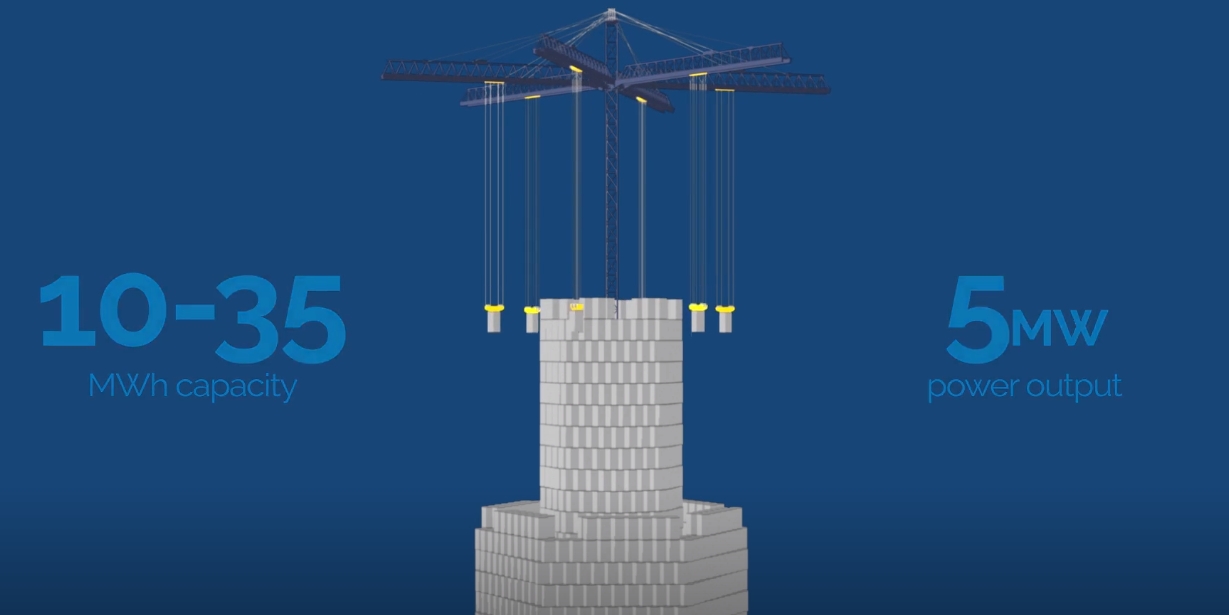
It is cheaper than building giant lithium-ion batteries, such as the huge batteries that Tesla has installed in Australia and other countries. This is partly due to the fact that the blocks can be made of cement, which is usually utilized.
“These materials that we use for the blocks are actually materials that you need to send to a landfill,” says Piconi.
The composition of the block:
- recycled stone and concrete mix;
- steel base plate and high-strength concrete.

For example, in California a concrete-waste construction site must pay as much as $ 55 per cubic yard to get rid of it. Unlike lithium batteries, to create a system does not require a specialized multi-million dollar factory. Standalone crane comes from a different manufacturer. In the extraction of lithium also uses a huge amount of water and there is a risk of toxic leaks.
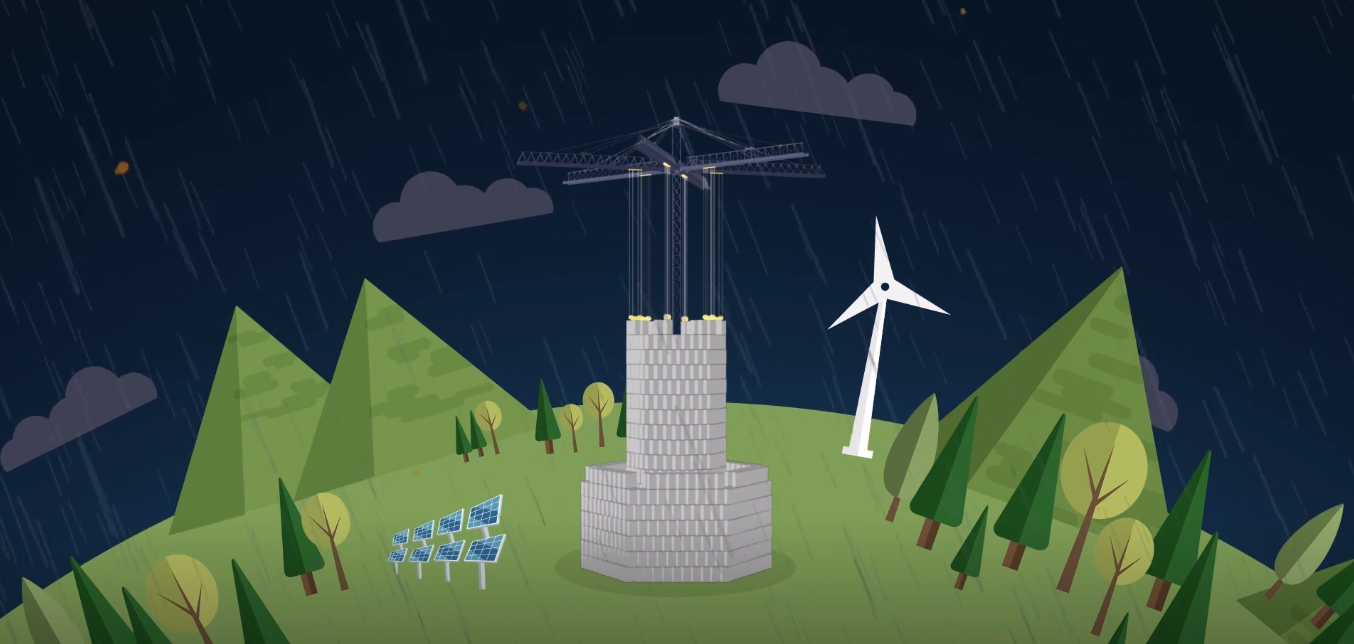
In a small town near its headquarters in Switzerland, Energy Vault built a small prototype of the device — 72 feet in height, instead of the full-fledged 393 feet (120 meters).
Development prototype and control point with software (five times less than real - 22 meters (72 feet) high):
This system can also operate on a small scale, but the company is focused on large players in the energy market.
Energy Vault begins selling its first orders to customers around the world. Negotiations are also underway with some customers who are considering the possibility of building huge new dams.
“We can save them a quarter of the cost without environmental problems and give something that will provide the system's deployment area with more opportunities for productivity,” says Piconi.
The solution can expand rapidly.
“We do not need to rely on production or large investments,” says Piconi.
This is a necessary step, as more and more countries and countries are striving for 100% renewable electricity.
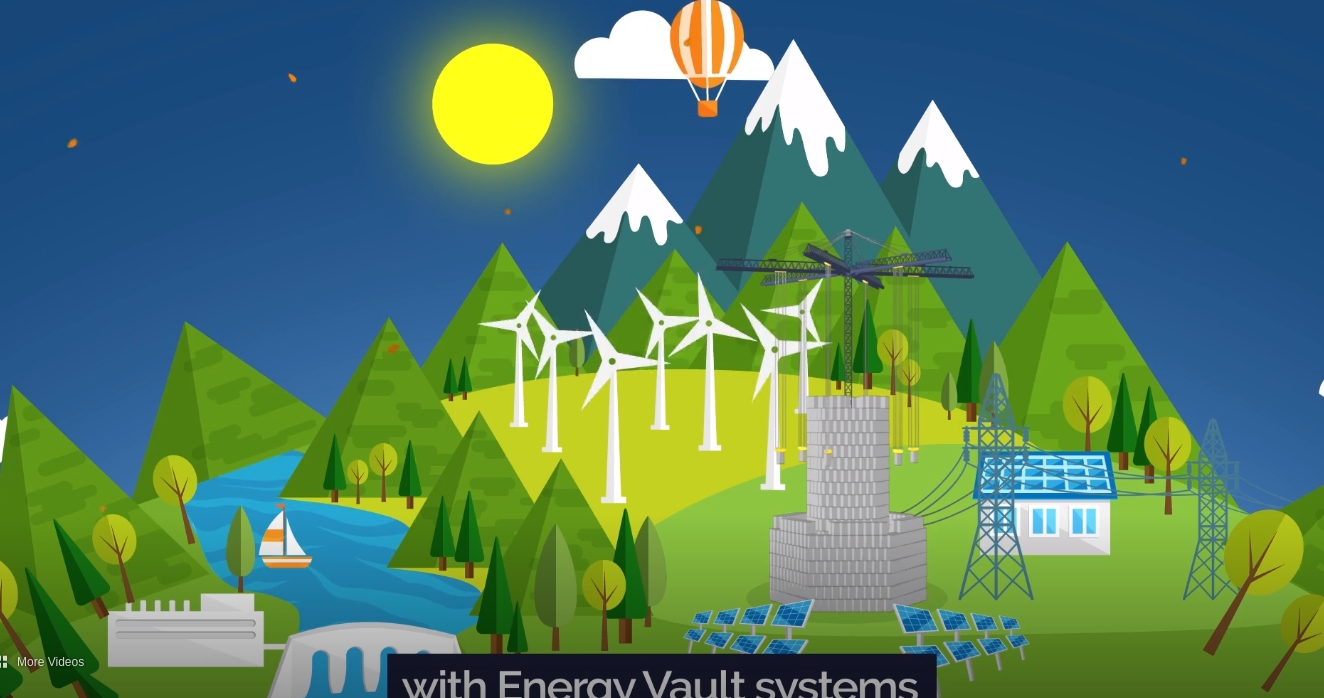
Interestingly, a similar technology is being tested in Germany and Britain, but instead of high-rise cranes, they plan to use abandoned coal mines there.
Here is Thaum Sauk for an example of how this works with PSPs.
At a small tariff in the grid, it pumps water into the reservoir (raise the blocks to high tower mode).

When the grid goes into a mode of higher tariffs, then we lower the water (we lower the blocks down).

In the comments to the article appeared calculations of this system .
Also on the website of the manufacturer of this solution, you can get acquainted with its parameters.
Source: https://habr.com/ru/post/429464/
All Articles